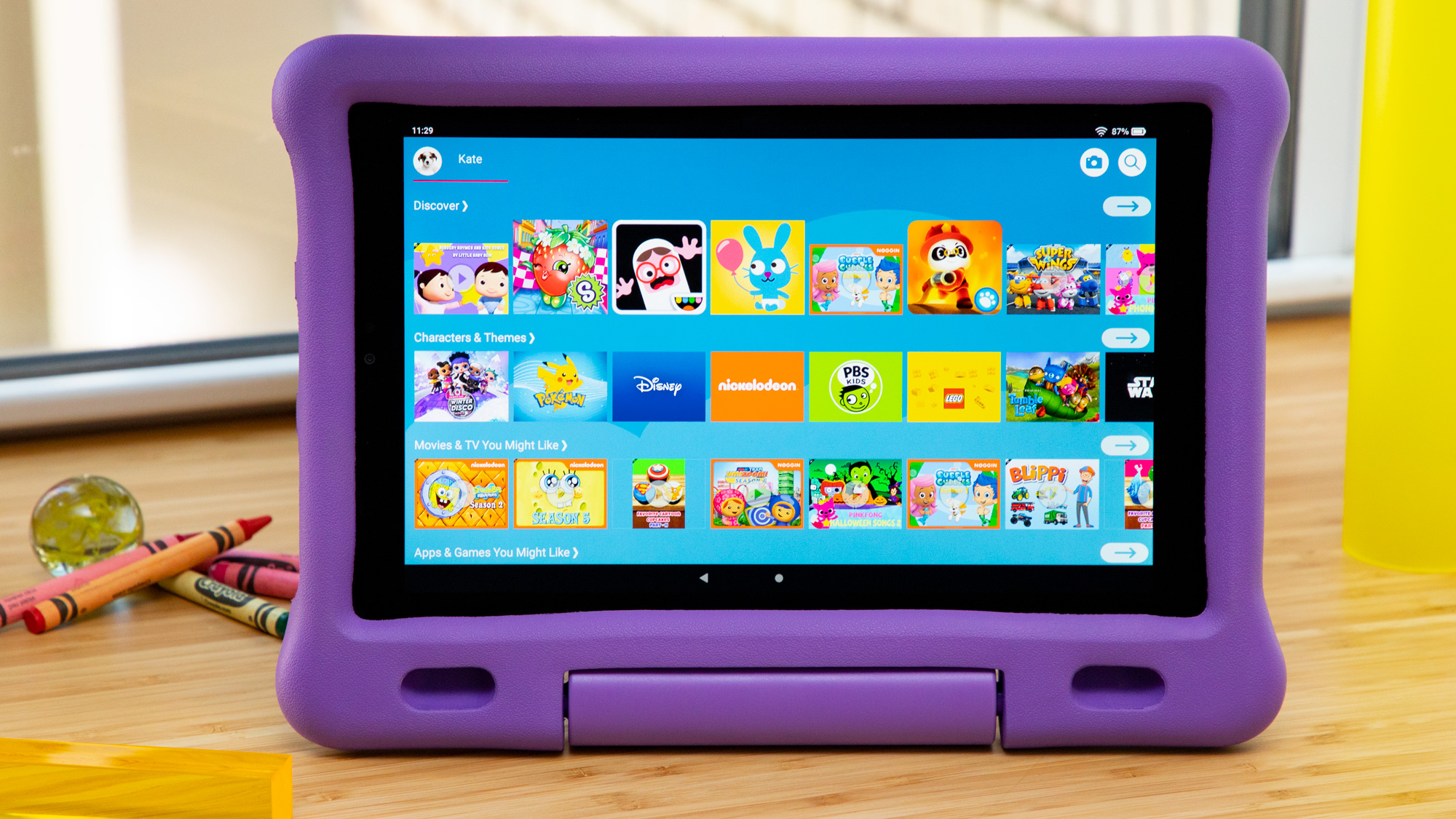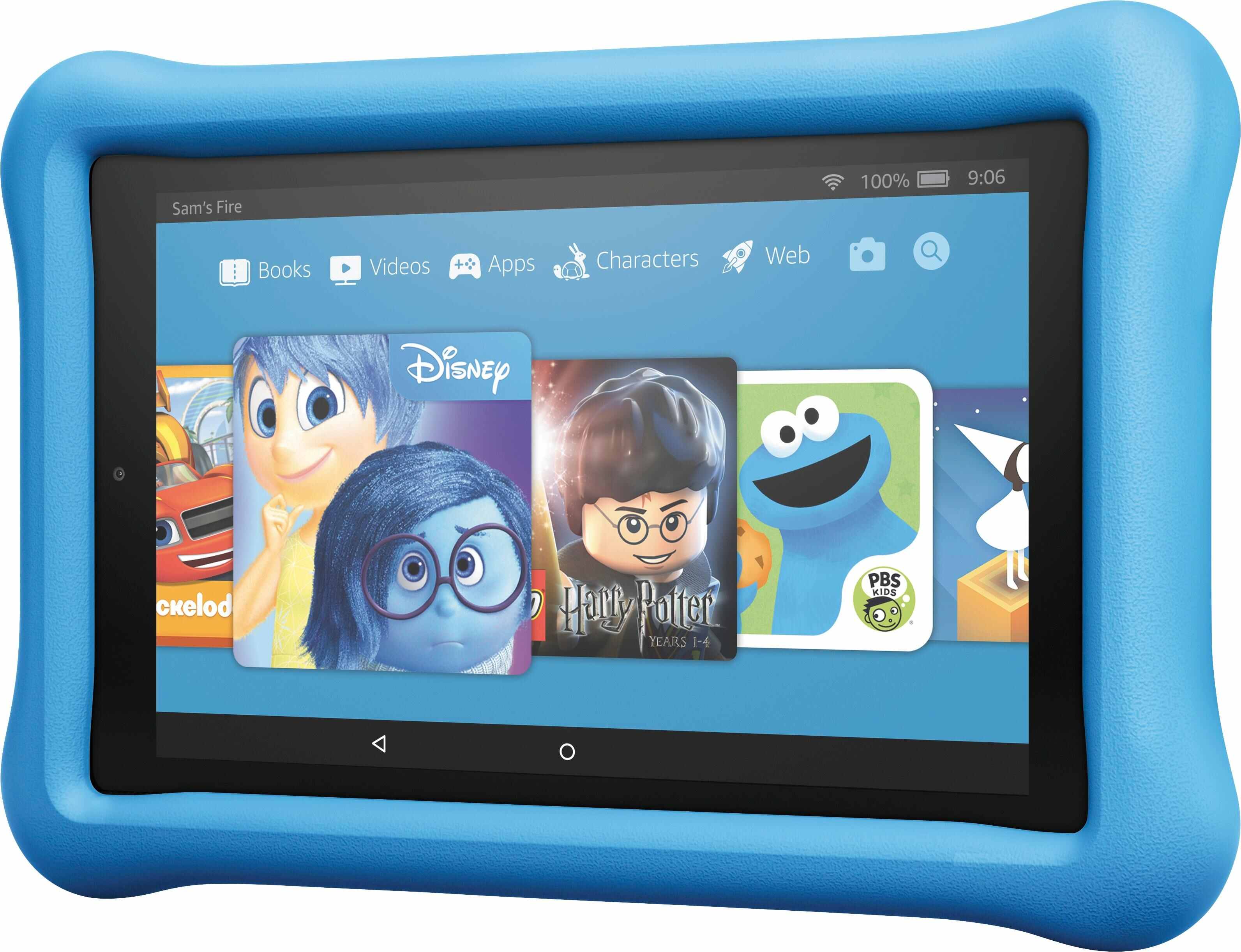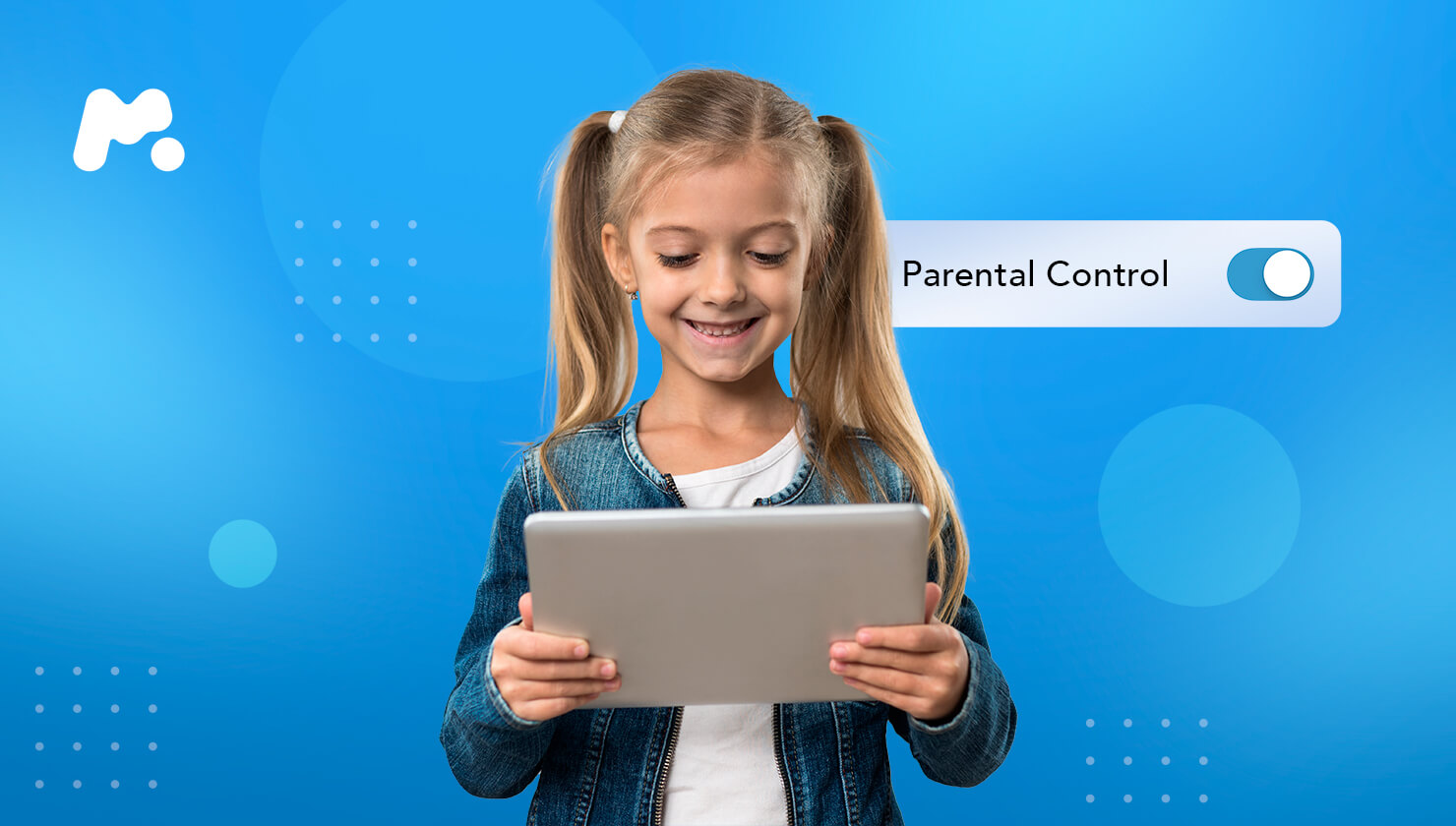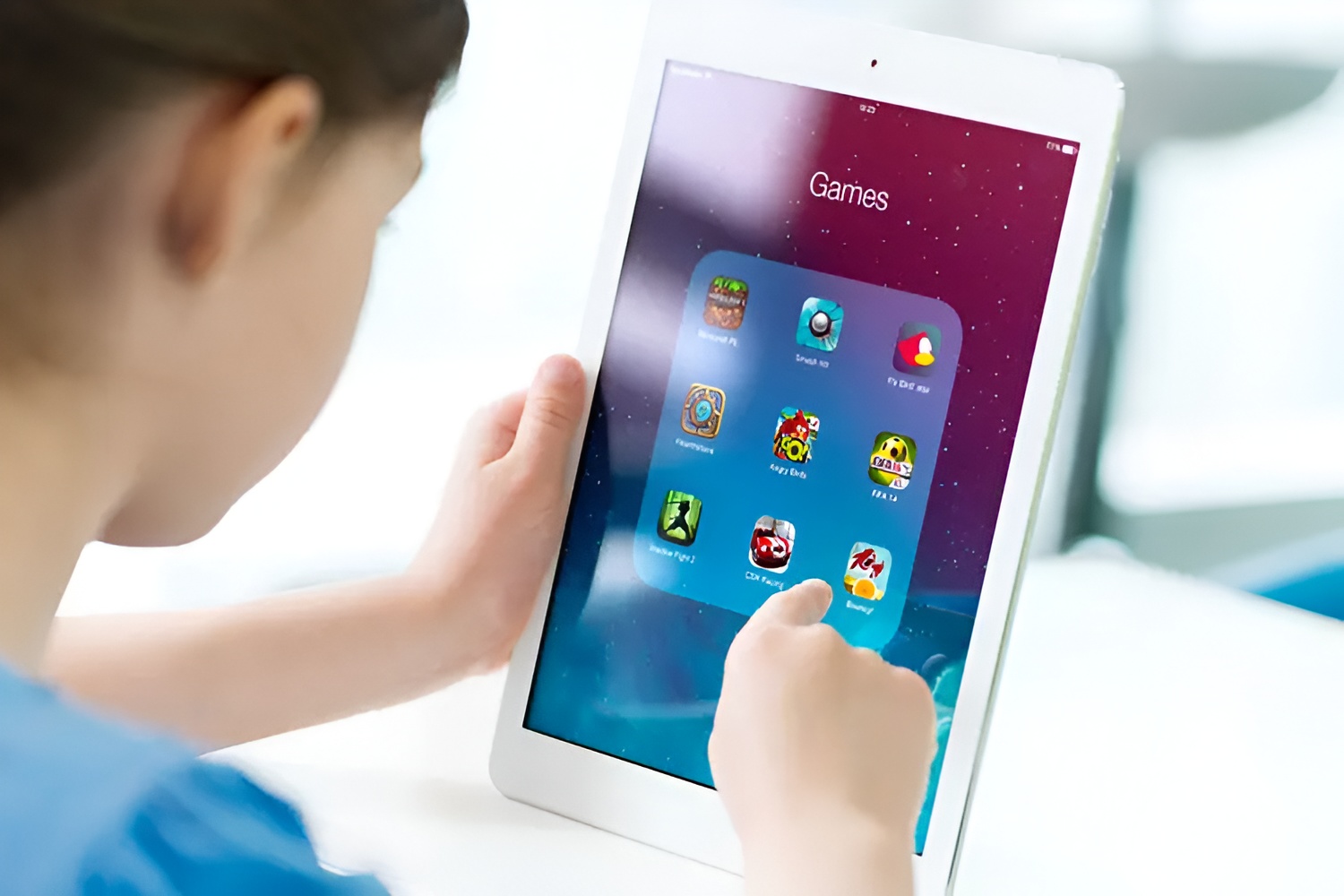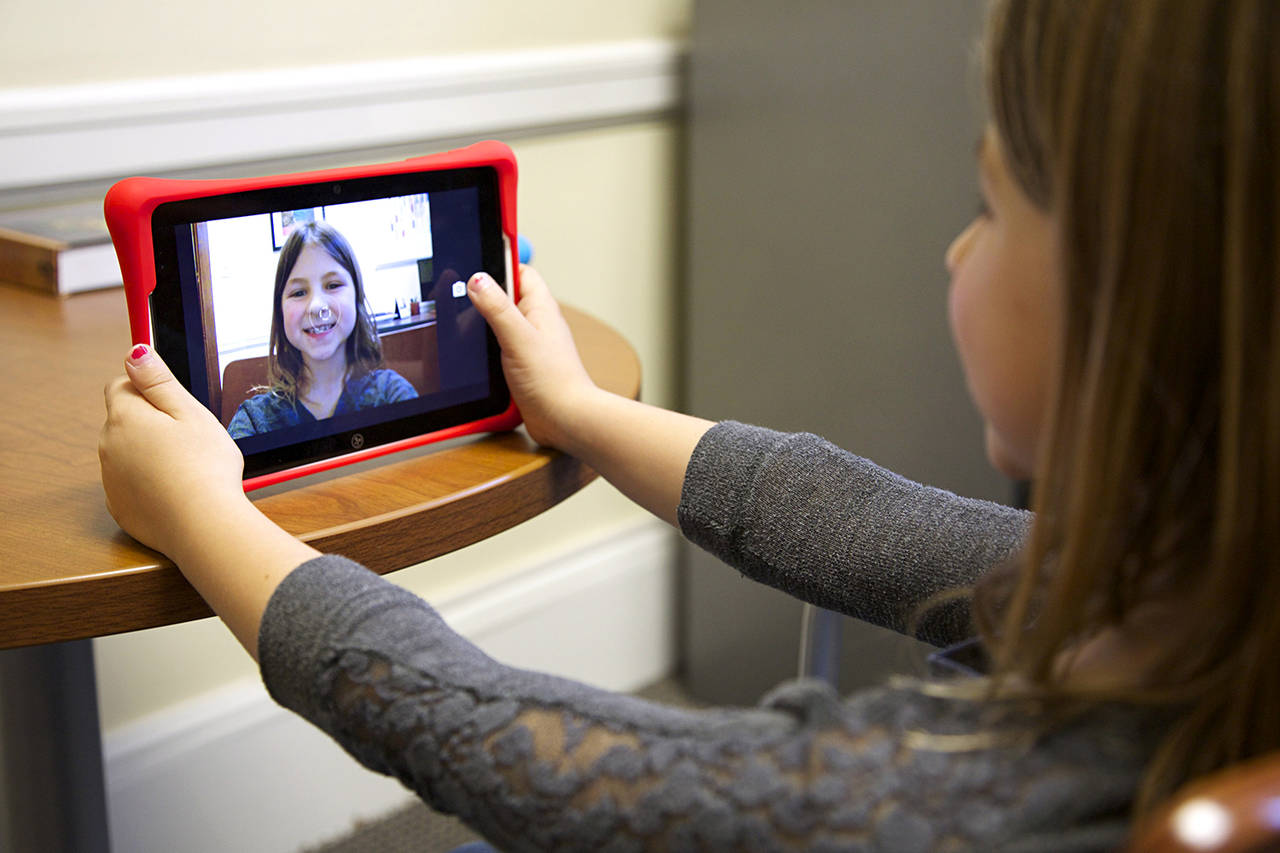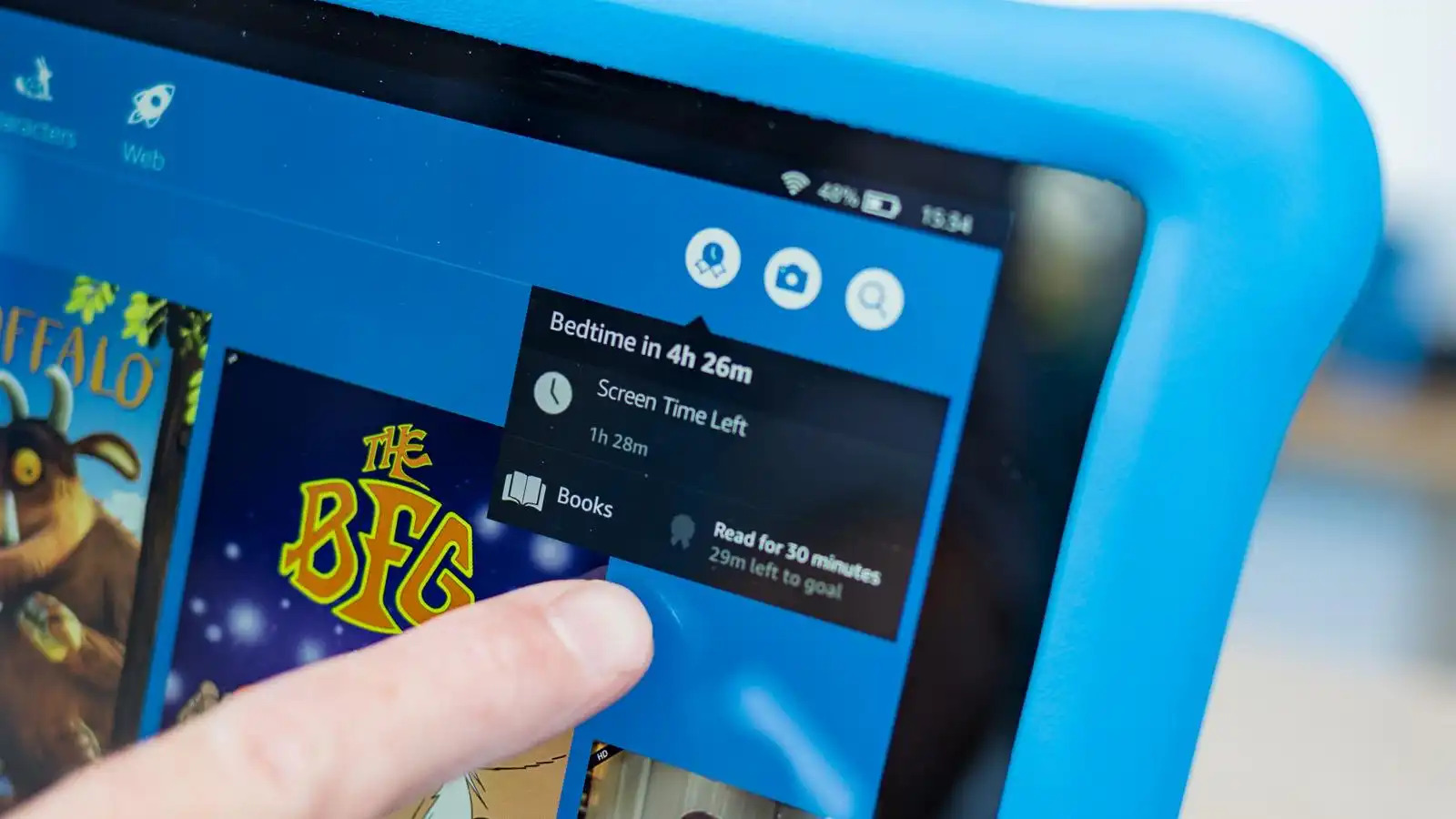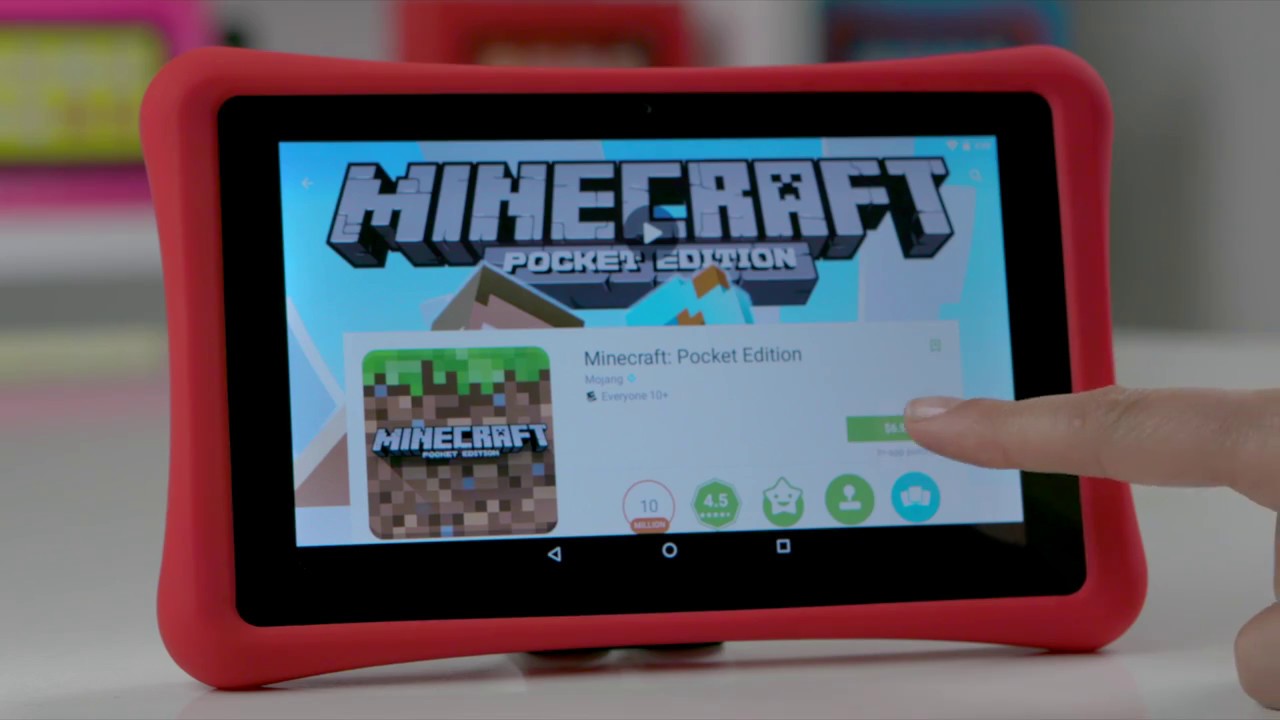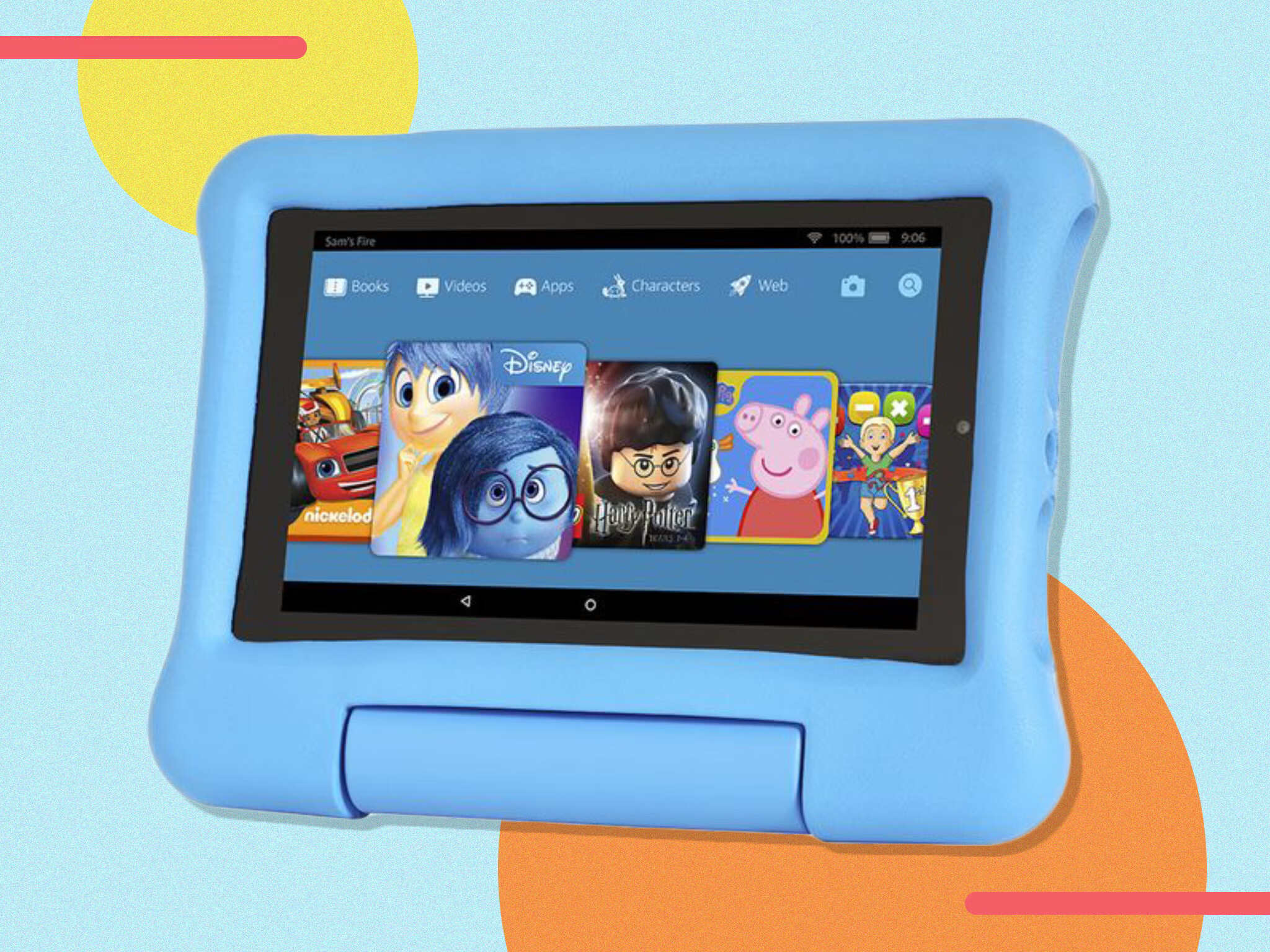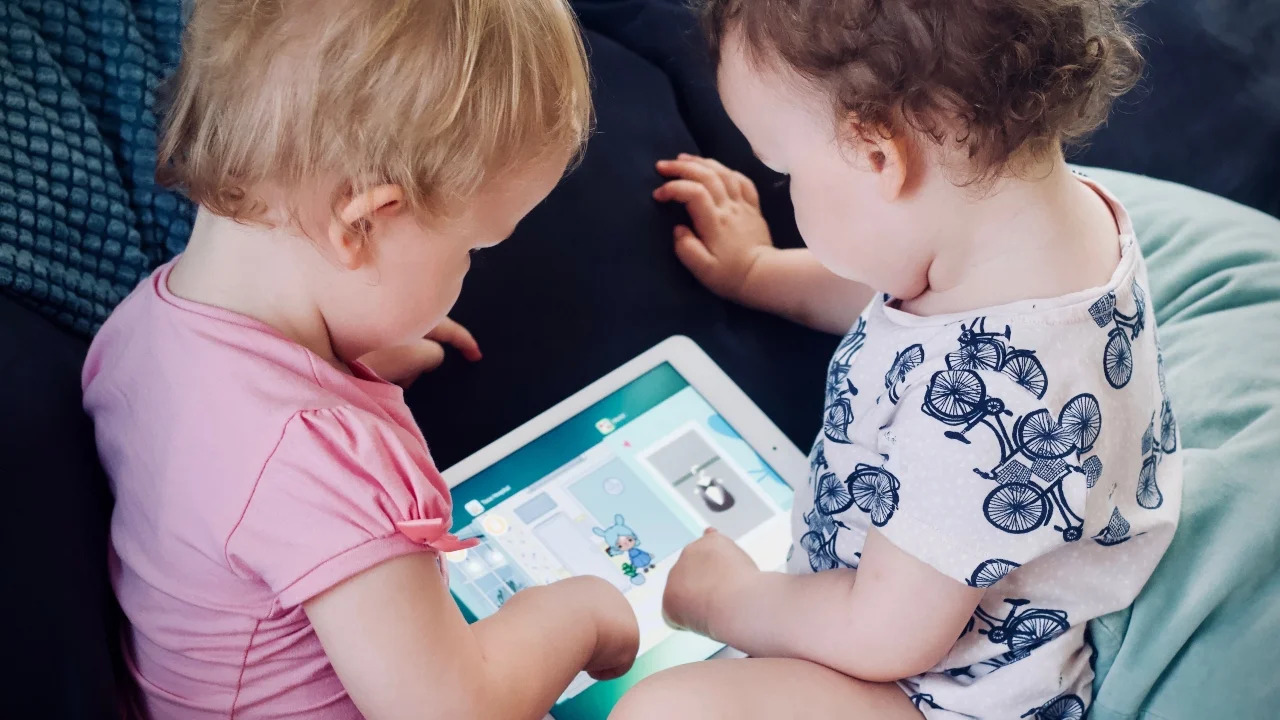Introduction
Technology has become an integral part of our lives, and tablets have become increasingly popular for people of all ages. Among the various user groups, children are one of the primary users of tablets. Tablets can provide children with a wealth of educational resources and entertainment, making them a valuable tool in their development. However, as with any technological device, there are pros and cons to consider when determining the appropriate age for a child to start using a tablet.
Tablets have numerous benefits for children, with the potential to enhance their learning experience. Interactive educational apps can help children develop fundamental skills such as reading, math, and problem-solving. Tablets also offer a wide range of multimedia content, including videos and e-books, which can further engage children in their learning journey. Additionally, tablets can provide a platform for creativity through drawing, music, and other artistic activities.
Despite their advantages, tablets also present a range of drawbacks for young children. One concern is the potential negative impact on their health and development. Excessive screen time can hinder physical activity and contribute to sedentary behavior, leading to issues such as obesity and poor posture. Psychologically, prolonged tablet use may affect attention span, social skills, and sleep patterns.
Determining the right age for a child to start using a tablet depends on various factors. It is important to consider a child’s individual readiness and maturity level. Some children may grasp technology quickly and can benefit from early exposure, while others may need more time to develop their motor skills and cognitive abilities.
Parents should also consider the content and features available on the tablet. Age-appropriate apps and parental controls can help ensure that children have a safe and suitable digital experience. Furthermore, setting limits on screen time and establishing rules around tablet use are crucial in maintaining a healthy balance between technology and other activities.
In this article, we will explore the recommended age range for tablet use, discuss age-appropriate tablet features, and provide guidance on selecting educational apps for young children. We will also address safety measures and strategies for managing screen time to ensure a positive and beneficial tablet experience for children.
Benefits of Tablets for Children
Tablets offer a wide range of benefits for children, making them a valuable educational and entertainment tool. Here are some of the key advantages of tablets for children:
- Interactive Learning: Tablets provide an interactive learning experience for children. Educational apps and games can help children develop essential skills such as reading, writing, math, and problem-solving. The interactive nature of these apps makes learning engaging and enjoyable for children.
- Access to Educational Resources: Tablets give children access to a vast array of educational resources. They can explore a variety of subjects through e-books, educational videos, and interactive quizzes. This enables children to expand their knowledge and explore topics beyond what is covered in their school curriculum.
- Enhances Creativity: Tablets offer various creative outlets for children. Drawing and painting apps allow children to express their artistic abilities, while music and dance apps encourage them to explore their creativity in different ways. These creative activities help foster imagination and self-expression in children.
- Improves Fine Motor Skills: Using a tablet requires children to navigate the touch screen, which helps develop their fine motor skills. Tapping, swiping, and pinching on the screen enhances hand-eye coordination and finger dexterity. As children continue to interact with the tablet, their motor skills improve, preparing them for future technological advancements.
- Customized Learning: Tablets enable personalized and adaptive learning experiences. Many apps adapt to a child’s individual learning pace and provide tailored content based on their progress. This personalized approach helps children learn at their own pace and focus on areas where they need additional support, enhancing their overall learning experience.
- Portable and Convenient: Tablets are lightweight and portable, making them easy to carry and use anywhere. This portability allows children to engage in learning activities outside of the traditional classroom setting. Whether on long trips or during outdoor adventures, tablets provide a convenient platform for continued learning and entertainment.
These benefits make tablets a valuable tool for children’s educational growth and development. However, it is important to ensure a balanced and controlled usage of tablets to maximize the advantages while mitigating any potential drawbacks.
Drawbacks of Tablets for Children
While tablets provide numerous benefits for children, it is essential to be aware of the potential drawbacks associated with their use. Here are some of the key drawbacks of tablets for children:
- Sedentary Lifestyle: Excessive tablet use can contribute to a sedentary lifestyle. Children may spend extended periods sitting or lying down while engaging with their device, leading to a lack of physical activity. This sedentary behavior can have negative implications for their overall health and well-being.
- Reduced Social Interaction: Spending excessive time on tablets can lead to a decline in face-to-face social interaction. Children may become engrossed in digital content and miss out on opportunities to develop crucial social skills through real-life interactions. It is important to balance tablet use with offline social activities and encourage interpersonal connections.
- Impact on Sleep: The use of tablets, especially before bedtime, can disrupt a child’s sleep patterns. The blue light emitted by the tablet screen can interfere with the production of melatonin, a hormone essential for sleep. It is advisable to establish screen-free time before bed to promote a healthy sleep routine.
- Potential Health Issues: Extensive tablet use may have physical and psychological health implications. Poor posture due to prolonged device usage can lead to musculoskeletal issues, such as neck and back pain. Additionally, excessive screen time can potentially affect a child’s attention span and cognitive development.
- Exposure to Inappropriate Content: Without proper parental controls and supervision, children may accidentally or intentionally access inappropriate content online. It is crucial for parents to establish age-appropriate restrictions and monitor their child’s online activities to ensure a safe digital environment.
- Dependence on Technology: Overreliance on tablets for entertainment and educational purposes may hinder a child’s ability to engage in other activities or entertain themselves without a screen. It is important to encourage a balance between screen time and other offline activities, such as outdoor play and creative pursuits.
While these drawbacks exist, they can be effectively managed through proper parental guidance, setting reasonable limits on screen time, and fostering a healthy balance between technology use and other activities.
Factors to Consider
When determining the appropriate age for a child to start using a tablet, it is important to consider various factors. Every child is unique and develops at their own pace. Here are some essential factors to consider:
- Physical Development: Consider whether your child has developed the necessary motor skills to use a tablet. Can they comfortably hold and manipulate the device? Children who are still developing their fine motor skills may struggle with using a tablet effectively.
- Cognitive Abilities: Assess your child’s cognitive abilities and their ability to understand and engage with digital content. Do they have the cognitive skills to navigate apps, follow instructions, and comprehend the content presented on the screen?
- Interest and Readiness: Pay attention to your child’s interest in technology and their readiness to engage with a tablet. Are they curious and enthusiastic about using a tablet? It is important for children to have a natural inclination and curiosity towards technology to fully benefit from tablet use.
- Parental Supervision: Consider whether you, as a parent or guardian, have the time and ability to provide appropriate supervision and guidance while your child uses a tablet. Younger children may require closer monitoring to ensure they are engaging with age-appropriate content and following safe browsing practices.
- Content and Apps: Evaluate the available content and apps designed for children on the tablet. Are there educational apps and games that align with your child’s interests and learning needs? Ensure that the tablet provides a wide range of age-appropriate and high-quality content for your child to engage with.
- Screen Time: Consider how tablet use will fit into your child’s overall screen time. It is crucial to strike a balance between various activities, including physical play, social interaction, and outdoor experiences. Set reasonable limits on screen time to prevent excessive dependence on the device.
By considering these factors, you can make an informed decision about when your child is ready to start using a tablet. Remember that it is important to regularly reassess and adjust their tablet usage based on their growth, development, and individual needs.
Recommended Age Range for Tablet Use
Determining the ideal age for a child to start using a tablet can vary depending on their individual readiness and developmental factors. While there is no one-size-fits-all answer, here are some general guidelines to consider when determining the recommended age range for tablet use:
Preschool Age (2-5 years): For children in this age group, introducing a tablet can be beneficial as a supplemental learning tool. Interactive educational apps and games can help develop early literacy, numeracy, and problem-solving skills. However, close parental supervision is necessary to ensure safe browsing and appropriate content selection.
Elementary School Age (6-10 years): As children progress into elementary school, tablets can further enhance their learning experience. They can explore more complex educational apps, engage in online research, and use digital tools to complete school assignments. Parental guidance is still crucial in setting screen time limits and guiding children to use technology responsibly.
Preteen and Teen years (11+ years): Older children and teens can benefit from using tablets for educational purposes, communication, and broader access to information. They can utilize tablets to research, collaborate on projects, develop digital literacy skills, and explore their interests. However, it is important to establish a balance between online activities and offline experiences to promote a healthy lifestyle.
It is important to note that these age ranges serve as a general guideline and should be adjusted based on individual circumstances. Some children may demonstrate readiness to use a tablet at an earlier age, while others may need more time to develop their cognitive and motor skills. Parents should consider their child’s maturity level, interest in technology, and the impact it has on their overall well-being when deciding on tablet use.
Remember, irrespective of age, parental involvement and supervision are crucial in ensuring a safe and controlled digital experience for children. Regular communication and discussions about responsible technology use, internet safety, and setting boundaries will contribute to a healthy relationship between children and tablets.
Age-Appropriate Tablet Features
When selecting a tablet for your child, it is important to consider the age-appropriate features and functionalities that will enhance their learning experience and prioritize their safety. Here are some key factors to consider when choosing a tablet for different age groups:
Preschool Age (2-5 years): For younger children, look for tablets with durable construction and child-friendly designs. They should have a bright, responsive touch screen with large icons and simple navigation. Parental controls should be easily accessible to limit access to inappropriate content. Consider tablets that offer pre-installed educational apps and games designed specifically for preschoolers.
Elementary School Age (6-10 years): Tablets for this age group should have more advanced features and specifications. Look for tablets with larger storage capacity to accommodate educational apps and multimedia content. A higher-resolution display provides a better visual experience for reading and viewing videos. Additionally, consider tablets with a front and rear camera for multimedia creation and video chatting capabilities.
Preteen and Teen years (11+ years): Older children and teens may benefit from tablets with more robust features. Look for tablets with faster processors, larger storage capacity, and higher-resolution displays. These tablets should support more complex applications and allow for multitasking. Consider tablets that offer access to productivity apps, digital creativity tools, and expandable storage options.
Additionally, regardless of age, there are certain features that are essential for all age groups:
- Parental Controls: Tablets should have robust parental control settings that allow parents to restrict access to inappropriate content, set time limits, and monitor their child’s activities.
- Wi-Fi and Internet Access: Ensure that the tablet has Wi-Fi connectivity, as it allows access to online educational resources and apps. Consider tablets with a safe browsing mode to protect young users from accessing harmful websites.
- Durability: Look for tablets with sturdy construction and protective cases to withstand accidental drops and rough handling by children.
- Battery Life: Consider tablets with long battery life, especially for younger children who may be using it for extended periods without access to a power source.
- App Store: Check if the tablet has a dedicated app store that offers a wide range of high-quality educational apps appropriate for your child’s age and interests.
Selecting a tablet with age-appropriate features ensures that your child can benefit from the technology while maintaining a safe and appropriate digital environment.
Educational Apps for Young Children
Educational apps can play a significant role in enhancing the learning experience of young children. When selecting apps for your child, it is important to choose those that are age-appropriate, engaging, and promote skill development. Here are some key categories and examples of educational apps suitable for young children:
Early Literacy: There are numerous apps that focus on developing early literacy skills such as letter recognition, phonics, and reading comprehension. Popular apps like ABCmouse, Sight Words, and Endless Alphabet provide interactive and engaging activities to facilitate language development in young learners.
Mathematics: Math apps can help children develop numeracy, basic arithmetic, and problem-solving skills. Apps like Mathletics, TeachMe: Kindergarten, and Khan Academy Kids offer age-appropriate math exercises, puzzles, and games to make learning math enjoyable and interactive.
Science and Nature: Apps that explore science concepts and nature can foster curiosity and a love for the natural world. Apps like Toca Nature, Science Kids, and My Incredible Body provide hands-on experiences and interactive content to introduce children to scientific concepts and natural phenomena.
Creativity and Art: Apps focused on creativity and art allow children to explore their imagination and express themselves through drawing, painting, and music. Apps like Procreate, Doodle Buddy, and Busy Shapes encourage artistic expression and stimulate creativity in young children.
Problem-Solving and Logic: There are apps that focus on developing problem-solving, critical thinking, and logical reasoning skills. Examples include Toca Lab: Elements, Thinkrolls, and Rush Hour Jr. These apps provide puzzles, challenges, and games to develop problem-solving abilities in a fun and interactive way.
Social Studies and Geography: Apps that introduce children to social studies topics and geography can broaden their understanding of the world. Apps like Barefoot World Atlas, Stack the States, and Little World Geography offer interactive maps, cultural information, and quizzes to explore different countries and cultures.
Parental Recommendations: When choosing educational apps for your child, consider checking app reviews, consulting educational websites, and seeking recommendations from other parents or educators. Look for apps that are well-designed, age-appropriate, free from advertisements, and promote positive educational outcomes.
Remember, using educational apps should supplement rather than replace traditional learning experiences. It is important to have a balanced approach that includes hands-on activities, social interaction, and real-world experiences alongside digital learning.
Safety Measures for Tablet Use
Ensuring the safety of children while using tablets is paramount. Here are some important safety measures to consider when allowing your child to use a tablet:
Parental Controls: Enable and familiarize yourself with the parental control settings on the tablet. These settings allow you to restrict access to inappropriate content, set time limits, and monitor your child’s activities. Customizing these controls based on your child’s age and maturity level is essential.
Safe Browsing: Teach your child about safe internet browsing habits. Encourage them to stick to age-appropriate websites and avoid clicking on unknown links or ads. Consider using kid-friendly browsers or safe browsing modes available on some tablets, which offer additional protection against unsafe websites.
Privacy Settings: Review and adjust the privacy settings on the tablet to protect your child’s personal information. Limit the sharing of personal details and ensure that only trusted individuals have access to your child’s tablet and accounts.
App Selection: Be cautious when downloading and installing apps. Stick to reputable app stores and carefully review the content and user reviews before installing any apps. Look for apps that are free from ads and in-app purchases targeted at children.
Internet Access: Provide supervised or filtered internet access for younger children, especially when accessing content outside of pre-installed apps. Consider using a child-friendly search engine or kid-safe websites that offer curated and age-appropriate content.
Education on Online Safety: Educate your child about internet safety. Teach them about the dangers of sharing personal information online, interacting with strangers, and the importance of reporting any inappropriate or concerning content they come across.
Screen Time Limits: Set reasonable limits on screen time and follow age-based recommendations for daily usage. Encourage breaks, physical activity, and engagement in other offline activities to promote a healthy and well-balanced lifestyle.
Supervision and Open Communication: Supervise your child’s tablet usage and maintain open communication with them. Regularly discuss their online activities, address any concerns or questions they may have, and remind them to seek help if they encounter anything that makes them uncomfortable or frightened.
Implementing these safety measures can provide a secure digital environment for your child to explore and learn while ensuring their well-being and protection online.
Setting Limits and Managing Screen Time
Managing screen time and setting limits on tablet usage is crucial for maintaining a healthy balance between digital activities and other aspects of a child’s life. Here are some strategies for effectively setting limits and managing screen time:
Establish Clear Rules: Set clear and consistent rules regarding when and how long your child can use the tablet. Clearly communicate these rules to your child and ensure they understand the expectations and consequences of violating them.
Age-Based Recommendations: Follow age-based recommendations for screen time limits provided by experts. The American Academy of Pediatrics suggests no more than one hour of high-quality screen time per day for children aged 2 to 5, and consistent limits on screen time for children aged 6 and above.
Use Time Management Tools: Utilize built-in tools on the tablet or use third-party apps to set timers and reminders that help your child manage their screen time effectively. These tools can automatically shut down or restrict access to the device once the allocated time limit is reached.
Encourage Balanced Activities: Encourage your child to engage in a variety of activities beyond screen time. Promote physical activities, social interactions, outdoor play, reading, and creative pursuits. Help your child find a healthy balance between screen time and other activities.
Model Healthy Behavior: Be a positive role model by practicing healthy screen time habits yourself. Limit your own screen time, especially when interacting with your child, and engage in activities that don’t involve technology. Children are more likely to follow rules when they see the adults around them adhering to them as well.
Create Technology-Free Zones and Times: Designate specific areas or times in your home where technology is off-limits, such as during family meals, before bedtime, or in bedrooms. Establishing technology-free zones and times promotes face-to-face communication and quality family interactions.
Encourage Leisure Activities: Engage your child in leisure activities that don’t involve screens, such as reading books, playing board games, pursuing hobbies, or engaging in outdoor play. Help them discover alternative ways to have fun and relax outside of the digital world.
Regularly Assess and Adjust: Regularly reassess and adjust your child’s screen time limits based on their age, developmental needs, and overall well-being. As your child grows older, their screen time needs may change, and it’s important to adapt the rules accordingly.
By implementing these strategies, you can help your child develop healthy screen time habits and maintain a balanced lifestyle that promotes their overall well-being and development.
Conclusion
Tablets can be valuable tools for children, offering educational and entertainment opportunities that enhance their learning and development. However, it is essential to consider the appropriate age, select age-appropriate features, and implement safety measures to ensure a positive and responsible tablet experience for children.
By considering factors such as physical development, cognitive abilities, and maturity level, parents can determine the optimal age for introducing a tablet to their child. Alongside age-appropriate tablet features, such as parental controls and durable construction, parents should select educational apps that align with their child’s interests and promote skill development in areas like literacy, math, science, and creativity.
Safety measures, including parental controls, safe browsing habits, and privacy settings, are vital to protect children while they use tablets. Setting screen time limits and managing their usage is essential for maintaining a healthy balance between digital activities and other offline pursuits. By creating clear rules, utilizing time management tools, and encouraging a variety of activities, parents can help their child develop healthy screen time habits and avoid excessive dependence on tablets.
In conclusion, by considering the age-appropriateness of tablets and apps, ensuring safety measures are in place, and managing screen time effectively, parents can make informed decisions to provide a positive and beneficial tablet experience for their children. It is through a balanced approach that takes into account the child’s individual needs and development that tablets can truly support their educational growth and technological literacy while fostering important skills and values offline.







